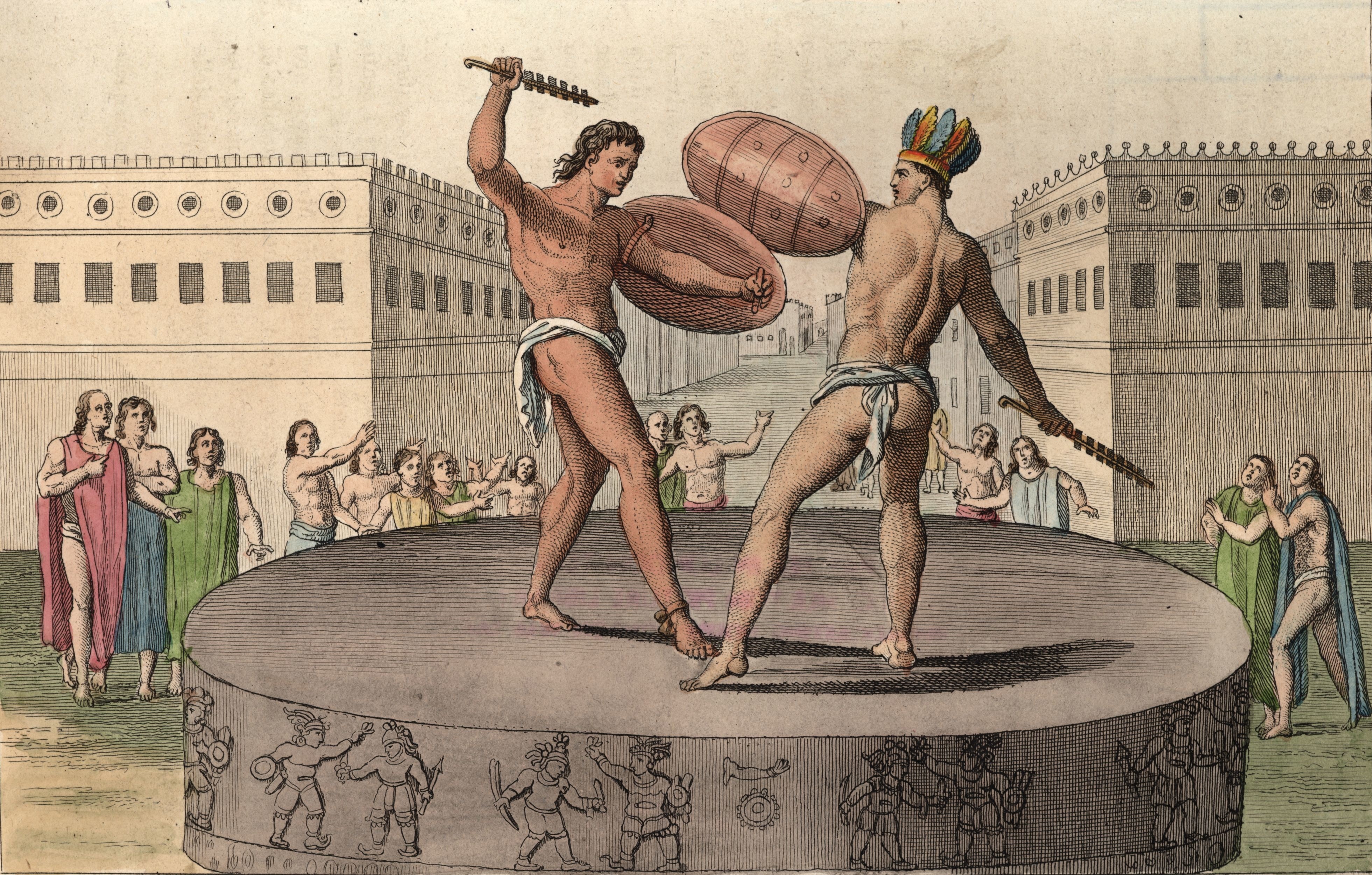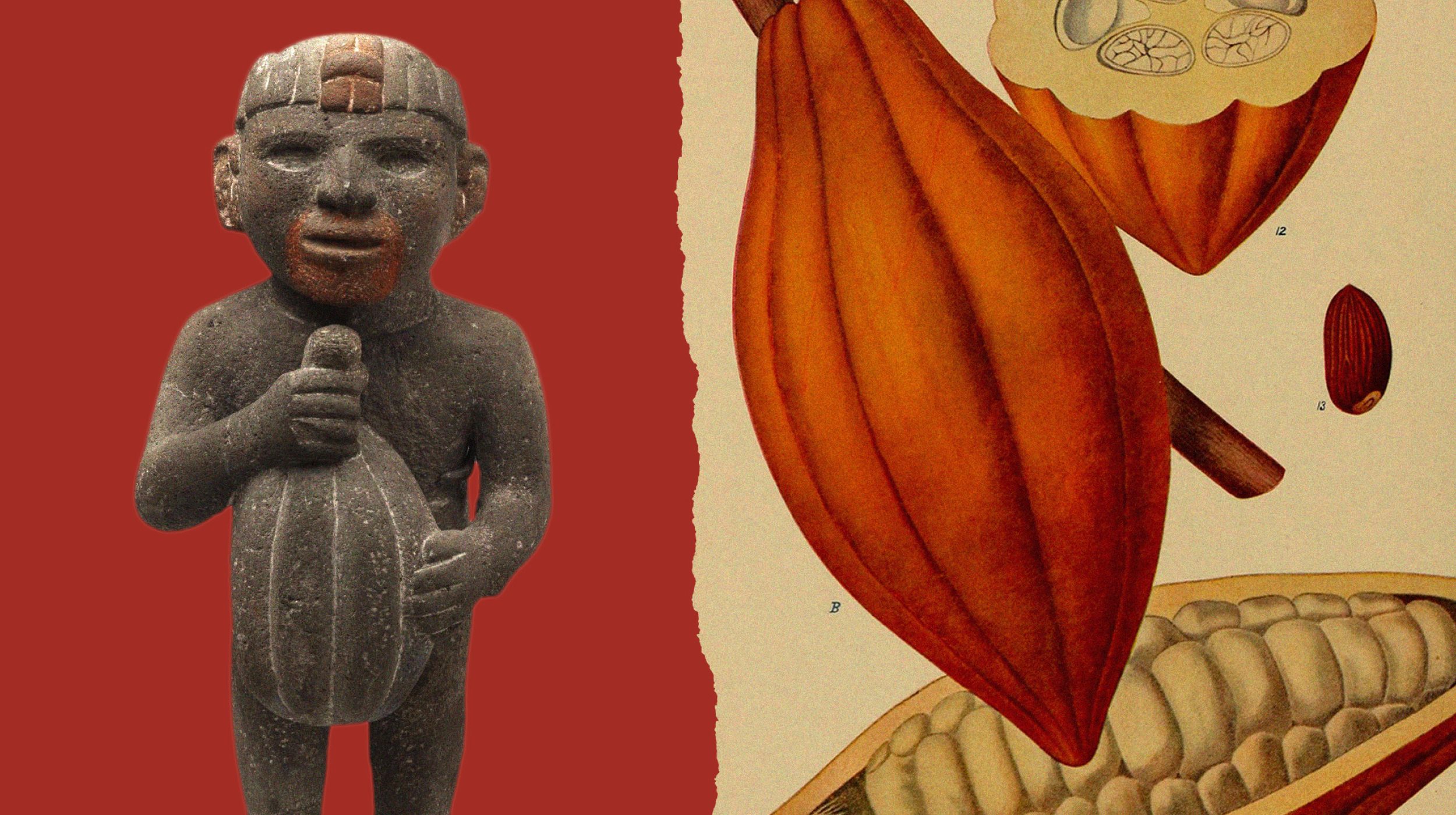Why didn’t the Aztecs invade Europe?

- The Eurasians had agricultural and technological advantages, while the Americas lacked certain resources and livestock.
- When Europeans arrived in the Americas, their diseases decimated indigenous peoples who lacked immunity.
- Jared Diamond suggests these factors influenced why Europeans invaded the Americas rather than vice versa.
Imagine a squadron of fighter jets roaring overhead. Sirens blare from every direction. In the distance, you hear a chilling scream. And then what sounds like gunfire. You look out the window and see crowds of people running by. And you can see why. Behind the fleeing mass, there plods a huge and terrifying robotic thing. You later find out what happened: Aliens landed in huge spaceships and conquered everything. They carried futuristic, deadly weapons and wore armor that no bullet could pierce.
The alien invasion is a familiar sci-fi trope. Usually, the plucky earthlings rally together and win the day with flag-waving and self-congratulations. But for history’s real-life alien invasion, there was no underdog story. It was a tale of genocide, pestilence, and enslavement. And it occurred when the Europeans ventured into the “New World.”
But why was it the Spanish who invaded Mexico and not the other way around? Why didn’t the Aztecs land in London or the Mayans in Madrid? The answer largely centers on crops and cows.
Two worlds apart
A very long time ago, the world was one huge landmass known as Pangaea. Then, around 200 million years ago, the various continents we know today drifted apart. Much later, roughly 300,000 years ago, humans turned up. Homo sapiens were a curious and resourceful species, with constantly itchy feet, and so, by 45,000 BC we had managed to make a home in every corner of the known world. But there was a problem: Eurasia and the Americas were separated by hundreds of miles of water. Despite all their ingenuity, humans couldn’t get from modern-day Siberia into Alaska.
Things changed during the “Last Glacial Maximum,” when a land bridge enabled Homo sapiens to move into the Americas. For 7,000 years, we poured into Alaska and all the way to the bottom of South America, to modern-day Chile. But when sea levels rose, these explorers — the first Americans — became cut off from their Eurasian cousins.
That is until the Spanish boats arrived in 1492.
Diverging paths
For roughly 15,000 years, there were two human societies: the “Amerindian” people of the Americas and the Eurasian people of Europe and Asia. One major difference between the two groups was agricultural resources and practices.
Native to the Fertile Crescent of Eurasia are eight “founder crops,” made up of cereals like barley, pulses like chickpea, and flax. All of these crops are easily planted, grown, and digested. These crops still provide most of the calories eaten worldwide today. Two of them (flax and barley) can be found outside of the Fertile Crescent, but the others were soon exported and grown wherever they could throughout the Eurasian landmass.
While the Americas had an abundance of high-yield crops (meaning dense in protein and calories), they often needed a very particular environment and were far more labor-intensive than Eurasian grasses. More importantly, tomatoes, squash, potatoes, and peppers cannot be stored as easily as dried grains. The only grain available in the Americas was maize, which is less nutrient-rich than the eight “founder crops” and requires a further processing stage called nixtamalization.
In Eurasia, it was far easier for people to achieve a calorie surplus. This enabled larger populations and allowed for professionalization. Now that only some people were farming, everyone else could do other things: science, engineering, math, literature, and philosophy. So it’s maybe no wonder why, within a few millennia, Eurasian societies had guns and Mesoamerican societies did not.
Biological warfare
Still, no matter how deadly the rifle is, it was not the deadliest weapon the Europeans brought to the New World. It is thought that nearly 20 million people — 95% of the indigenous peoples at the time — died from the smallpox virus. Ultimately, entire populations were wiped out by the viruses and bacteria the Europeans carried in their bodies.
Over several millennia, the people of Eurasia had developed a genetic immunity (or, at least, a resistance) to diseases like smallpox. Why? Because they lived in close proximity to livestock. In his 1997 book, Guns, Germs, and Steel, Jared Diamond writes that there are only 14 big, herbivorous animals easily domesticated in the world. Of those, “Only five species became widespread and important around the world. Those Major Five of mammal domestication are the cow, sheep, goat, pig, and horse.” None of these animals were native to the Americas. Only one out of 14 — the llama/alpaca — was native to the Andes of South America.
Having all the “Major Five” domesticated animal species gave Eurasia a huge advantage. As Diamond puts it, “they provided meat, milk products, fertilizer, land transport, leather, military assault vehicles, plow traction, and wool, as well as germs that killed previously unexposed peoples.” Living close to animals means you catch all sorts of bugs. These bugs are often relatively weak and less lethal strains (for example, cowpox), which will inoculate you against stronger versions (smallpox). Swapping and adapting to livestock germs is what made the Eurasian genome resistant to so many diseases — a resistance the Amerindian people did not have.
Guns, germs, and a whole lot more
Diamond’s book is one of the best-selling history books of all time. It’s a mainstay of undergraduate history courses and is an entertaining, eye-opening examination of world history from a perspective many wouldn’t consider. But as with any history book, it is not the definitive answer to the question of “why Europeans invaded Mesoamerica and not vice versa?”
For one, Diamond’s narrative oversells geographical determinism. History is far more complicated and with far more variables than for any one factor to be the answer. There is far more randomness and luck to the mesh of history than Diamond’s book might imply. There are also many factors left unconsidered — things like culture, political ideology religion, environmental catastrophe, and the impact great or genius individuals can have.
History, like the humans that make it, is hugely complicated.





